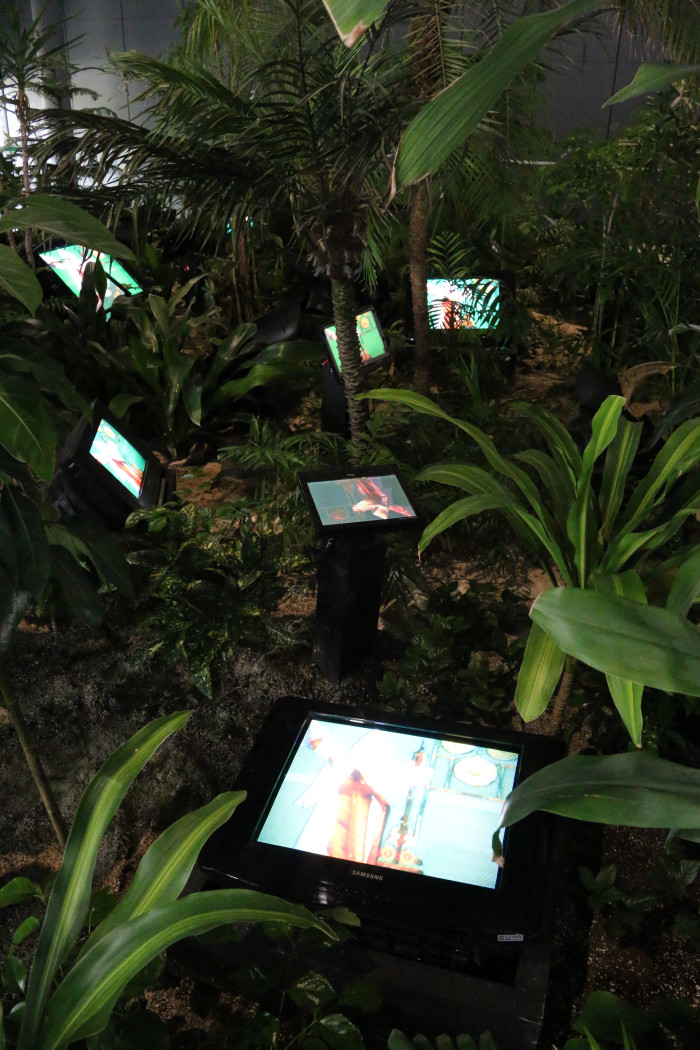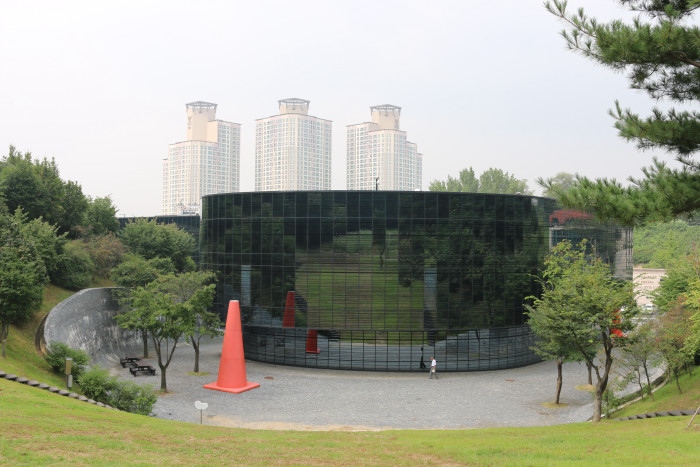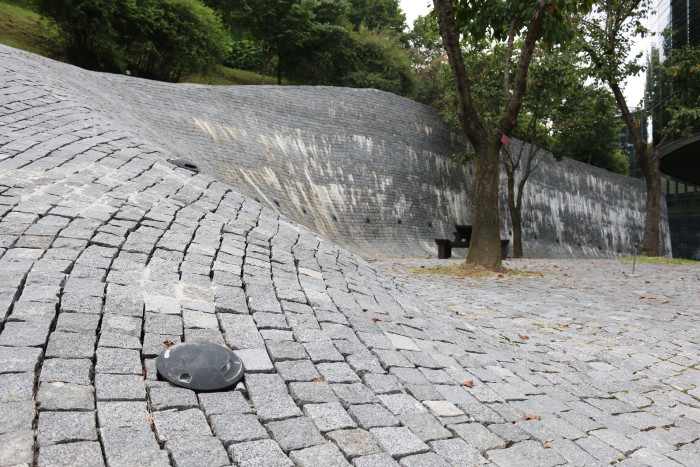GyeongGi Cultural Foundation
Yongin_Nam June Paik Art Center
A Visit to the House of a Genius
Although the genius is as always ahead of our time, his house is now familiar to us
"The House where the Spirit of Nam June Paik lives on". It was in 2008 that the Nam June Paik Art Center opened in Sanggal-dong near the Suwon-Singal interchange on Gyeongbu Expressway. Ten years have passed since then. But why is Nam June Paik in Singal?
It is the question that visitors to this museum have asked themselves since its establishment. They often wonder, was he born in Singal? Or has he ever lived in this area? We can guess, but it turns out there is no real connection between this place and Nam June Paik. Born in Changsin-dong, Jongno-gu, Seoul, Paik has lived in many parts of the world, including Hong Kong, New York, and Dusseldorf, and did not make an issue of his relationship with locations in determining where his works would dwell forever.

Paik's masterpiece, TV Garden, welcomes visitors at the entrance. In the dimly lit indoors, monitors can be seen through the green plants repeatedly showing cryptic images. Along with TV Garden, you can meet his other masterpieces such as TV Buddha, TV Fish, and Elephant Cart at the museum.
The extraordinary performances and video art works he has shown are sophisticated as always. The museum also holds various exhibitions for his works besides the permanent ones. Experimental and creative works of today's artists are exhibited, inquiring of the relationship between technology and art as Paik did. It is a bit unnerving to enter the dim exhibition hall with its blinking monitor lights. It can be difficult to understand the mind of a genius. But that is why his works are always fresh, even if you have seen them many times before.

● The Nam June Paik Art Center was co-designed by Kirsten Shemel and Marina Stankovic, who won the grand prize for their design entry in 2003. The museum has won several awards including the Korea Architectural Culture Award, the Korea Civil Architecture Technology Award, and the Gyeonggi Architectural Culture Award.

● Unlike the straight and angular facade of the building, the back wall is circular. This makes it look like a grand piano from the top. The smooth exterior wall made of black glass is surrounded by a round wall finished with lumpy square black stones. Over a decade, the black stones have faded and the plaques at the entrance have started to peel. Although the genius still remains aloof, unapproachable, his house has been worn smooth over time.
● There are concerts and performances occasionally held at the back garden of the center. Visitors can sit and relax on the grassy hill without seats to watch performances. You can find the Gyeonggi Children's Museum over the hill.

● Be sure to visit the library on the first floor. You can find books, periodicals, videos, and audio materials that help understand the works of Paik as well as much of modern art. There are many children's books for family visitors. Children’s DVD viewing is also available.
<Copyright(c)2002 GGC All rights reserved.>
information
Nam June Paik Art Center
Address/ 10, Paiknamjune-ro, Giheung-gu, Yongin-si, Gyeonggi-do
Contact/ 031-201-8500
Open Hour/ 10:00-18:00 (Closed at 19:00 in July and August)
Dayoff/ (except for national holidays), January 1, Seollal and Chuseok
Web/ njp.ggcf.kr
keywords
- Writer
- GyeongGi Cultural Foundation
- About
- Everything about the GyeongGi arts and culture, GGCF
- homepage
- https://www.ggcf.kr/